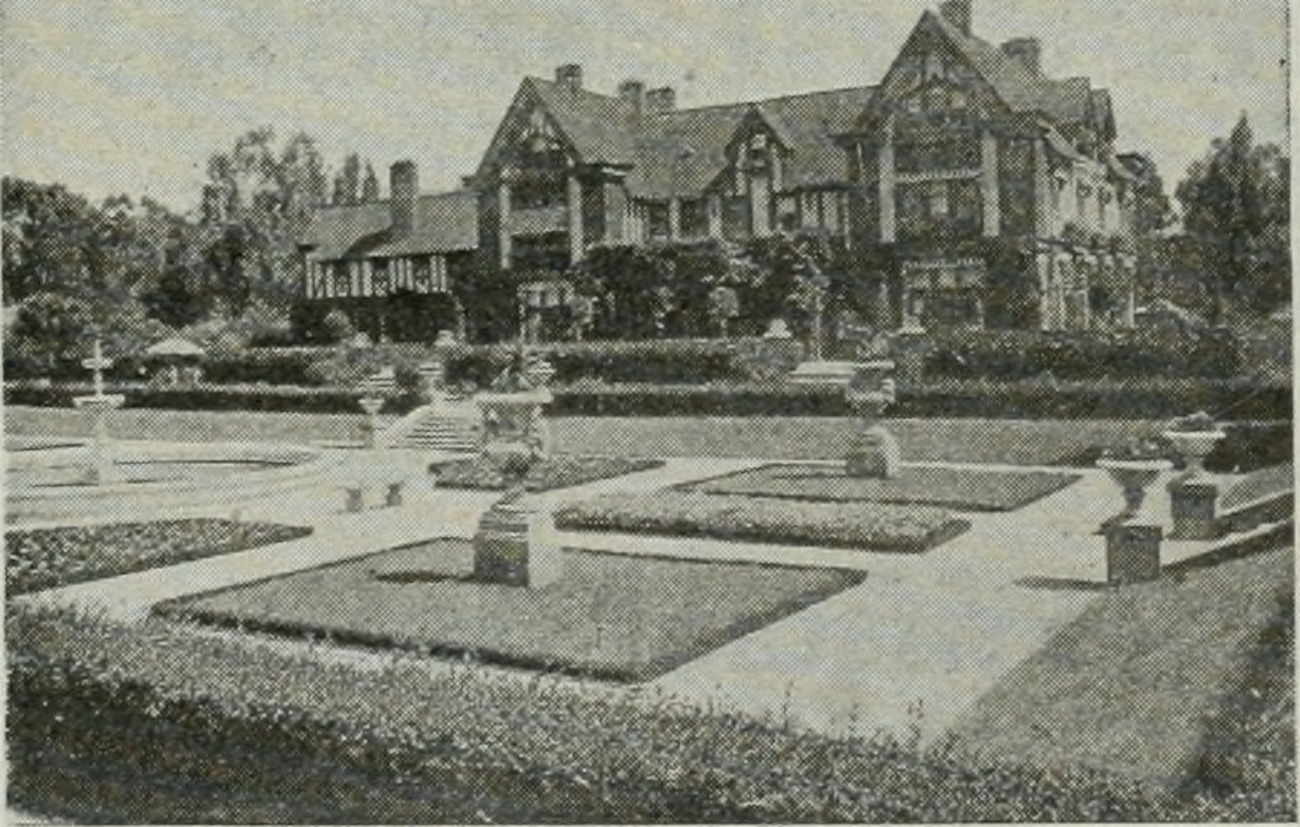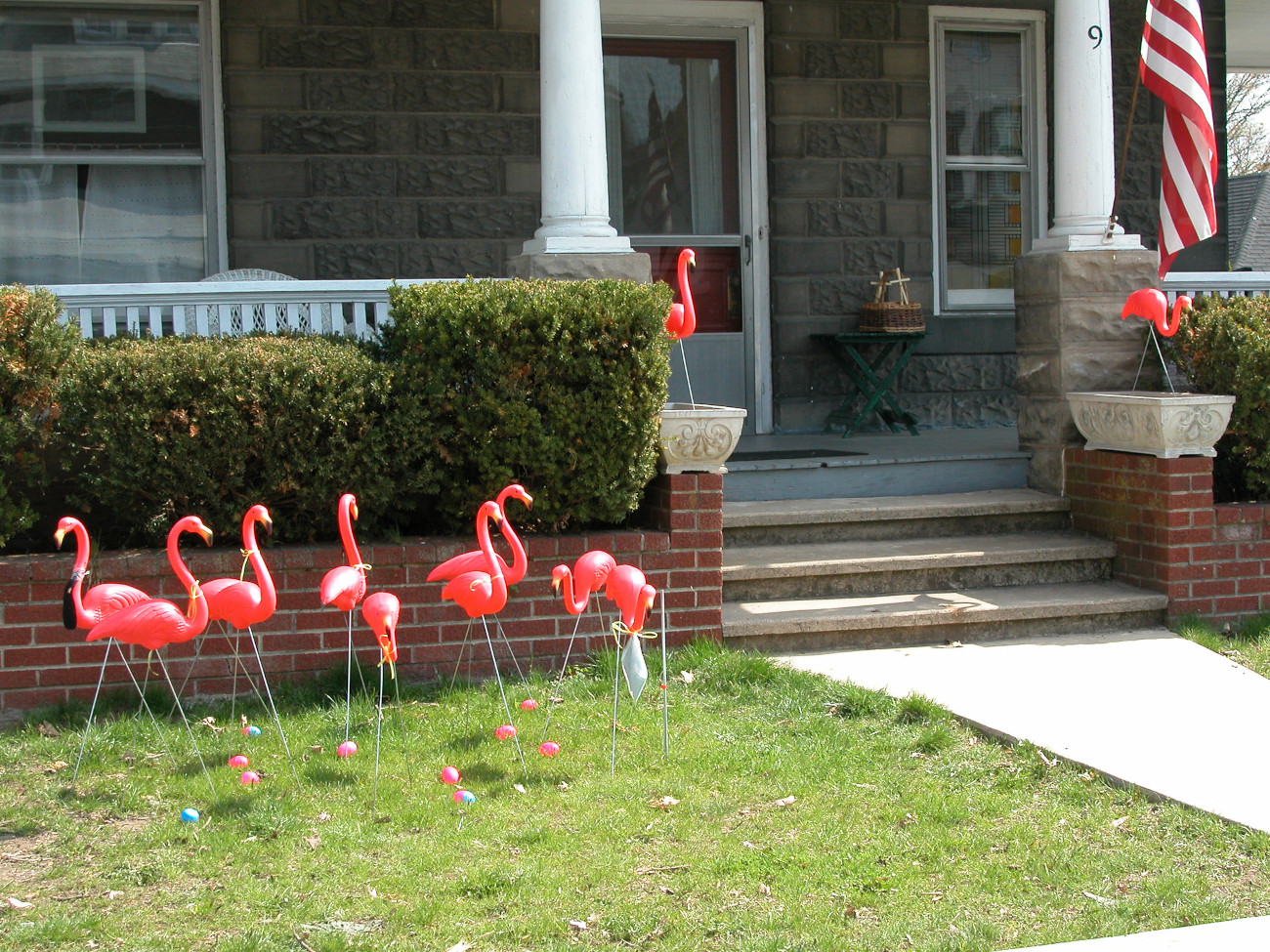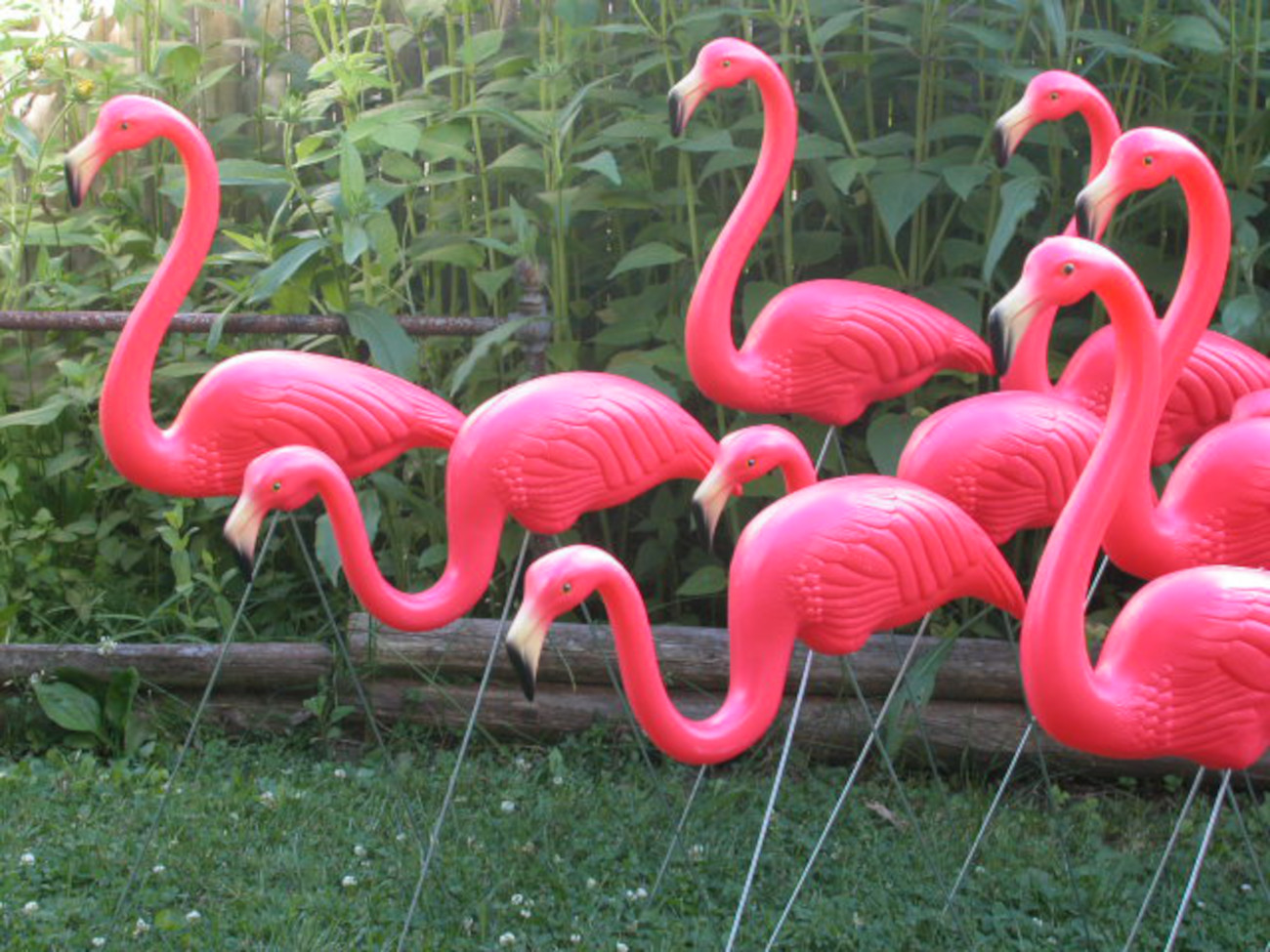Sometimes out of the blue, you spot a happy blip of pink in the corner of your eye – a plastic lawn flamingo. Their wide-eyed innocent presence has graced lawns for several decades. Sadly the love for flamingos has waxed and waned, and one has to wonder – why have plastic flamingos fallen out of fashion?

Lawn ornaments date back centuries ago, but these weren’t the plastic ones we recognize today. No, these were fancy handcrafted stone pieces to make the scenery more natural, the ornaments were garnishes of artistic “nature” sprinkled throughout the landscape. As it rolled into the 20th century and as an expanding home-owning middle class emerged, people wanted to imitate the landscape designs of the upper class, but it got mixed with the trendy modernism of the time.

And this is where flamingos come into play, and flamingos weren’t chosen at random. Flamingo imagery was embedded into the cultural East Coast consciousness, especially after the opening of Florida’s famed Flamingo Hotel in the 1920s. At the time, Florida was the destination spot for rich people trying to escape the brutal Northeast winters and bask on sun-soaked beaches. So it was easy for people to liken flamingos as something special, connecting the animal and any marketed flamingo product as an exotic and wealthy item.

Plastic flamingos come out of the coldest and possibly most unsuspecting state – Massachusetts. In the 1950s, Leominster was the leading town for manufacturing plastic vanity, bathroom, and lawn accessories, so when Union Plastics commissioned Don Featherstone to design a flamingo, it was a mixed bag. Sure Featherstone had designed several lawn ornaments before but never an animal as spindly as the flamingo. Since flamingos are far from native in Massachusetts, the designs were Featherston’s interpretations of National Geographic flamingo pictures.
Critics of the plastic flamingo bashed the decoration, connecting its common, lower and middle-class association and garish, pink color as kitsch. During the postwar era, baby boomers ascribed the plastic flamingo as an artificial creation of their parents’ generation, who decorated their natural green yards with an unnatural plastic simulation of nature.

By the time the 1980s hit and boomers were at their peak adult age, the plastic flamingo, once again, re-emerged as a nostalgic icon of their youth, purchased and used in an ironic design statement. Several pop media appearances resurged the plastic flamingos’ presence in America, but after Union Plastics closed in 2006 and Don Featherstone passed away in 2015, the plastic flamingos’ presence diminished further, never regaining popularity. If you want to buy yourself a piece of history, don’t fear! Luckily the torch has been passed to Cado Productions, who still manufacture some of Featherstone’s designs – yet you’ll be able to spot the difference between a Union Plastic flamingo and a Cado plastic flamingo based on their eyes. The older ones have a brown, natural-looking pupil, while the newer models have a solid black pupil.
Regardless of how plastic flamingos flocked to our lawns, these decorations always linked to that bygone homey-ness of the mid-century suburban landscape. Whether you owned a plastic flamingo or not, you have to admit that these decorations are happy and fun items!













